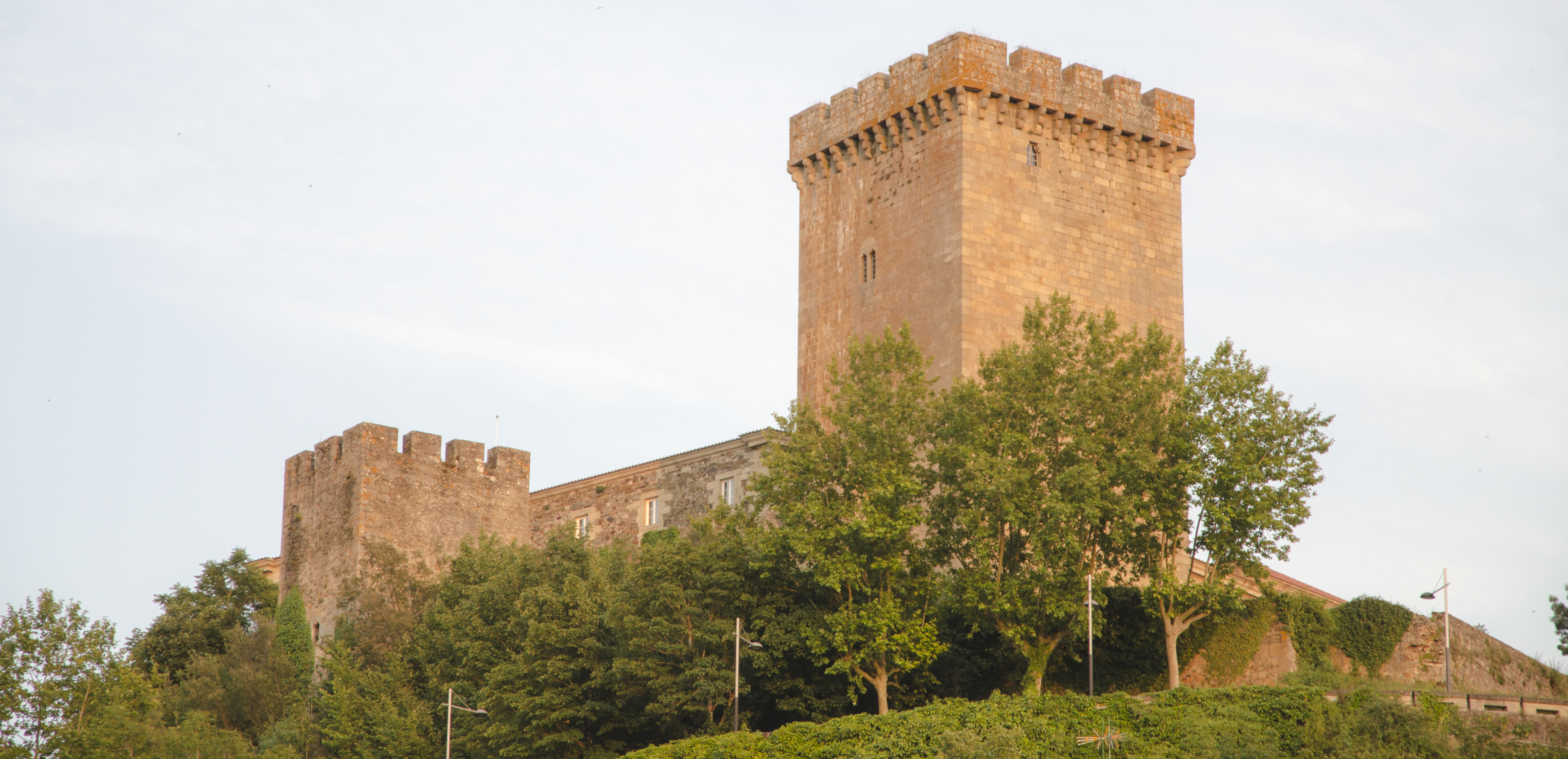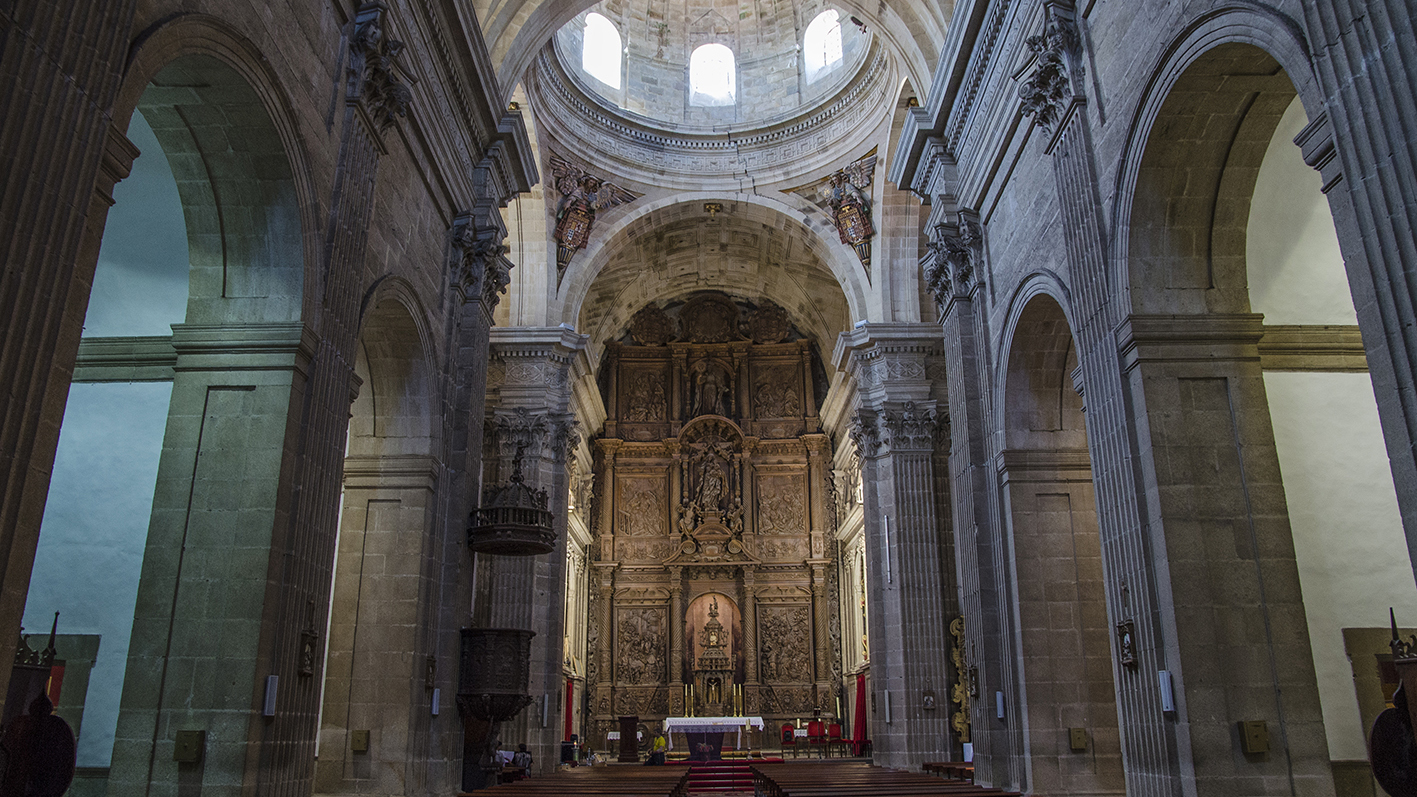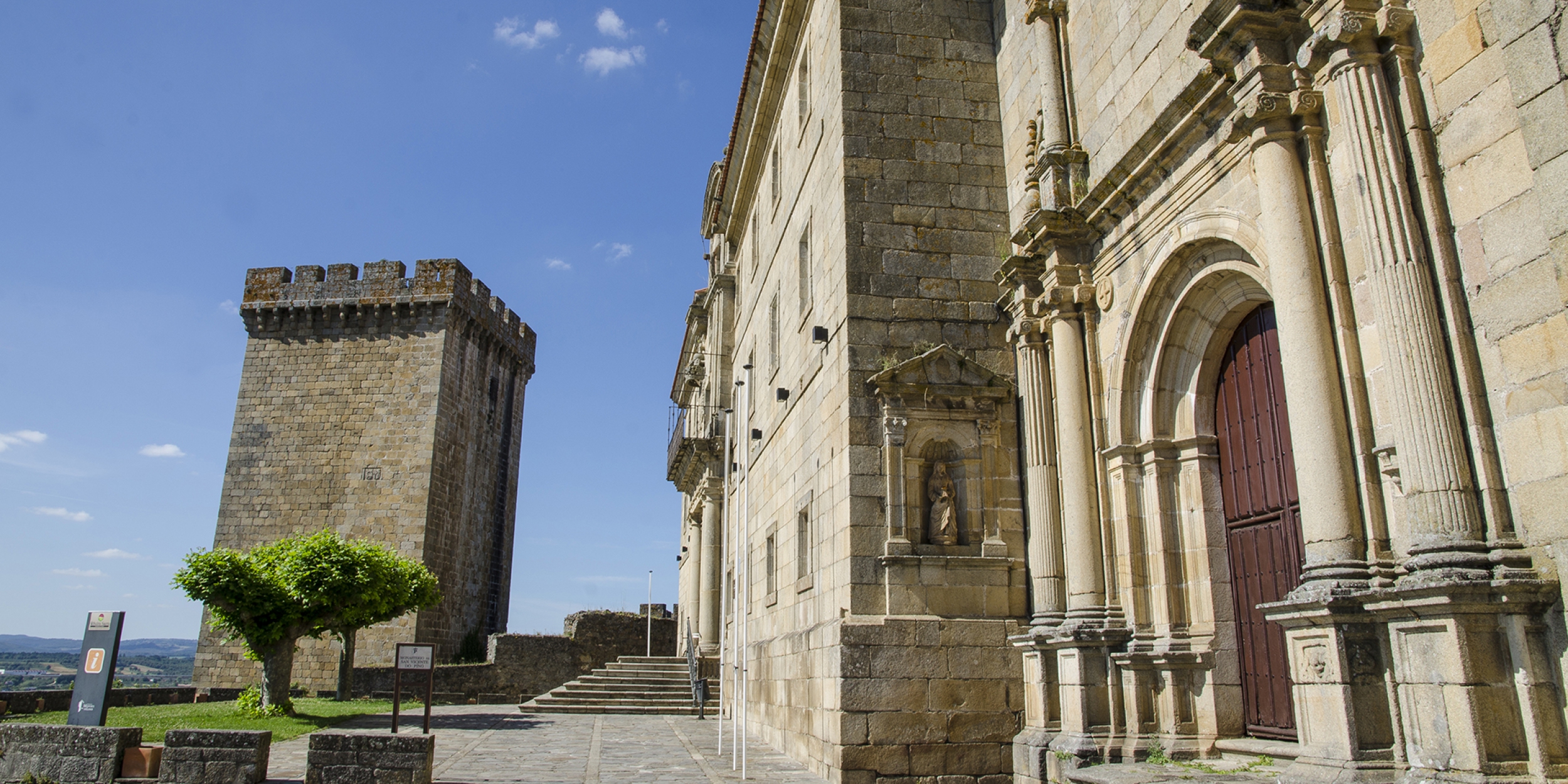MONUMENTS
THE MONUMENTS OF SAN VICENTE DEL PINO, consist of the Torre del Homenaje (Tower of Homage), the Palacio Condal and the Benedictine Monastery (these two buildings now form part of the Parador de Turismo de Monforte - a luxury hotel).

TORRE DEL HOMENAJE (HOMAGE TOWER) The Torre del Homenaje is the watchtower of Monforte and can be seen from afar as the emblem of the city, it acts as a beacon that marks out Monforte for the visitor. For the locals, the sight of it means they are home. It was built during the 13th and 15th Centuries and was the most important building within the castle. Here the Ceremonies of Homage took place, a ritual that brought together the lord with his subjects. The tower is 30 metres high, 13 metres across with walls that are 3 metres thick. A building that viewed from below is impressive and that has fantastic views over the whole of the Lemos valley from its battlements. The tower and the Medieval fortified wall suffered significant damage during the Great War of the Irmandiña, (1467-1469) and was rebuilt after the war.
Schedule:
From wednesday to sunday from 10:00 a.m. to 2:00 p.m. and from 4:30 p.m. to 8:30 p.m.


PAZO CONDAL This was the stately home and residence of the Counts of Lemos. It was built in the 16th Century and reconstructed in the 17th Century after a devastating fire. Nowadays, this building is part of the hotel of the Parador de Turismo.

BENEDICTINE MONASTERY OF SAN VICENTE DEL PINO Although its origins date back to the 10th century, the building as it is now dates back to the 16th century. The Neoclassic facade and cloisters of the building are particularly impressive. The monastery’s church has a Renaissance front and an interior from the Gothic period with a choir stall that contains a Baroque style organ. Of particular interest are the images of Saint Ana with the Virgin and Child and a bas-relief of Romanesque origin. Many of the important celebrations in Monforte take place within the church such as the Patron Saint’s Day which celebrates the Virgin of Montserrat on the 15th of August and the Day of Saint Blas on the 3rd of February. Nowadays, much of the monastery is part of the hotel of the Parador de Turismo de Monforte de Lemos.

JEWISH QUARTERS/OLD TOWN The Jews of Monforte were never ghettoised but lived mixed in with the local population. The fact that many of them were craftsmen and men of letters is probably why the clearest references to Jews living in Monforte are of people living in the streets called Zapaterías (Cobblers), Falagueira (Orators) and Pescaderías (Fishmongers) and in the area which is now called Plaza de España, which today merges with the commercial centre of the city. As you walk through the Jewish Quarter you can still see the homes of some of the more important Jews such as the Gaibor. In the calle Pescaderías you can see another one of the towers of the fortified wall. From it there is a spectacular view of the city, of the Convent of La Régoa and of the old wall. A little lower in the same street is the old prison; from its upper part there is another panoramic view of the old town and, close to the building, of the Plaza de España. Finally, in the Old Town you can still see two of the gateways of the old wall, the Puerta de la Alcazaba and the Porta Nova.


COLEGIO NUESTRA SEÑORA DE LA ANTIGUA Popularly known as the Escorial of Galicia, it is an impressive building in the Herrerian style of the 16th and 17th Century. It has two perfectly symmetrical wings and a central church with a large cupola. Its construction was commissioned by Cardinal Rodrigo de Castro in 1593. Nowadays it is the Colegio de los Padres Escolapios (College of the Escolapios Fathers) and houses a unique art gallery where you can enjoy the paintings of El Greco (Aparición de la Virgen con Niño a San Lorenzo – The Apparition of the Virgin and Child to Saint Lorenzo and Fray León meditando sobre la muerte- Fray Leon meditating on death). A highlight of the church is its altarpiece by Francisco de Moure and the statue of Cardinal Rodrigo de Castro praying, the founder of Escolapios. In front of the Colegio is an enormous esplanade which is used as a place to stroll and meet people. Here, during the Patron’s Day festivities, concerts and other activities take place. Many of the artists that have performed in this special place, with the facade of Escolapios as their backdrop, have commented that they have never before performed on such a spectacular stage.
Visiting schedule:
Tuesday to Friday: 5:15 pm.
Saturday: 11:00 am, 1:45 pm, 5:15 pm.
Sunday: 1:45 pm.
Advance reservation. Contact: +34 982 404 715. Price: 4,50€


THE OLD BRIDGE It is reputed to be of Roman origin and we know that it was rebuilt by the maestro Pedro Rodríguez Remberde at the end of the 16th Century. It has six semicircular arches, two of which are filled in due to later reformations. In its wide central arches you can see a variety of marks made by the stonemason. You can go across it by foot but a different perspective of the bridge can be enjoyed by going on a boat trip along the river. On one of its sides is the Museo de Arte Sacro de las Madres Clarisas (The Museum of the Sacred Arts of the Clarisa Sisters) and on the other side is the entrance to the commercial area of the old town.

CHURCH OF BAAMORTO This building is of Romanesque origin and still retains traces of this style, despite the reforms done in the 17th and 18th Century. Its main entrance has a semi-pointed arch and a Baroque facade. Its portico is on Dorian columns. Its walls are of stone blocks and masonry. The southern wall has some interesting preserved paintings



